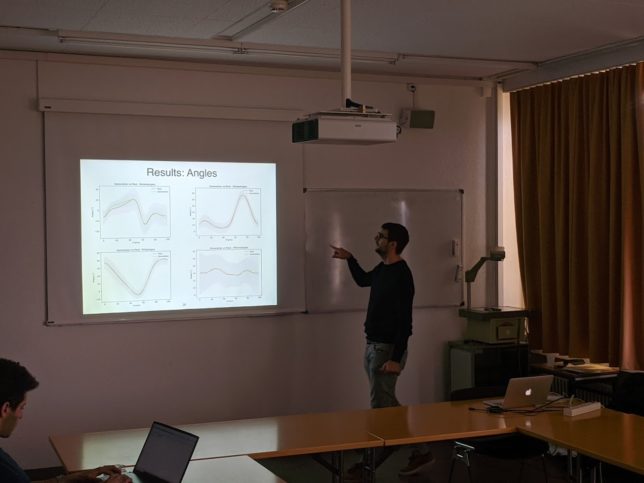Joao Candido Ramos has been working in our group as a research assistant for over a year now, contributing to the SimGait project. At the same time, he has been preparing his Master Thesis, which he successfully defended on Wednesday the 10th of February. His Master Thesis was entitled:
"Patient-Specific Pathological Gait Modelling with Relational
Networks"

We congratulate Joao for his high quality work and we are very happy to welcome him as a PhD candidate!!! Apart from starting this new role with a head start, as he has already shown qualities of a mature researcher in his field of study, he is also a valuable contributor to the team's dynamics and the team's spirit! Joao's focus will continue to be on Graph Neural Networks (GNNs) and on modeling complex data.
Master Thesis Abstract: The present work tries to learn human motion dynamics and to generate human-like trajectories condition on the patients clinical parameters. Our idealized goal is to provide a tool (a machine learning model) that is able to predict accurately the gait of a human given some of it’s attributes (height, weight, lengths of different members, etc). In other words, our goal is to provide a tool that helps surgeons finding the optimal parameters that will improve the patient motion and minimizing the deterioration of other parameters. However, model and simulate pathological gait resulting from motor impairments is a complicated task due to the limited availability of training data and the gait variability.
In this thesis, we provide a generative approach, named conditional-NRI, that beats all the baselines. Our proposed model is able to generate patient specific gait by learning the temporal and spatial dependencies. Our approach consists on combining Recurrent Neural Networks (RNNs) (Rumelhart et al., 1986) with Graph Neural Networks (GNNs) (Gori et al., 2005, Scarselli et al., 2009). RNNs are a well known class of models able to capture dependencies in sequential data. GNNs on the other hand use the structure of the data to propagate the information between different nodes of a graph. Combining this two types of models, allows the resulting model to learn the temporal information with the RNN, and the spatial relations with the GNN who will then propagate the information over the connections found.